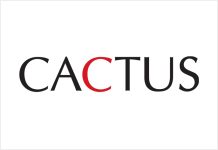
According to the Nature Index, Japan’s scientific output has failed to keep pace with other leading nations over the past decade, risking its position among the world’s elite if renewed government efforts fail to reverse a downward trend in its performance.
Japan’s share of high-quality papers included in the Nature Index dropped by 6% between 2012 and 2016. Furthermore, while China’s rapid growth has meant that other leading nations – including the US – have also experienced a relative decline, Japan’s output has also fallen in absolute terms. Publications by its authors in high-quality natural science journals, as defined by the index, fell by 8.3% over the last five years.
These findings are featured in the Nature Index 2017 Japan supplement, which looks closely at Japan’s recent research performance. It uses data from the Nature Index, which tracks the high-quality research of more than 8,000 global institutions. (See ‘About the Nature Index’ for full definitions of measures.)
Data from Clarivate Analytics’ Web of Science (WOS) and Elsevier’s Scopus database, also featured in the supplement, further illustrate a downward trend in performance. The WOS shows that in 11 of 14 fields, Japan published fewer articles in 2015 than 2005. In materials science and engineering, strong areas for Japan historically, its publications fell by more than 10%. The most acute decline was in computer science, where output fell by 37.7%. In three fields however, medicine, mathematics and astronomy, Japan did publish more papers than it did ten years ago. While the total number of articles in the Scopus database, which tracks peer-reviewed literature, increased by approximately 80% between 2005 and 2015, Japan’s output grew by only 14% and its share of global output fell from about 7.4% to 4.7%.
This downturn has led to a challenging situation in Japan for early-career researchers, with full-time research positions becoming less common. While government R&D spending is among the world’s highest, it has remained essentially flat since 2001, while other nations – such as Germany, China and South Korea – have significantly increased their spending. Over this period the Japanese government has reduced funding for universities to pay staff salaries. As a result, universities have scaled-back the number of permanent positions and shifted towards contracting researchers, according to the Japan Association of National Universities. The number of research associates under 40 and on contracts more than doubled between 2007 and 2013.
David Swinbanks, Founder of the Nature Index, said: “Japan has long been a world leader in scientific research. However, this supplement’s data, from the Nature Index and our partners, illustrate the scale of Japan’s challenge in the coming decade. While science budgets have risen elsewhere, there has been a period of under-investment since 2001 that has hindered Japan’s institutions’ ability to produce high-quality research. To the government’s credit, university reform has become one of its top priorities, as it seeks to spur innovation and growth. Plans to increase by 10% the number of university researchers under 40 by 2020 by supporting more permanent positions should certainly be welcomed.”
The top 10 of leading Japanese institutions for high-quality science is led by the University of Tokyo, a global heavyweight in its own right. Kyoto, Osaka and Tohoku Universities place second, third and fourth respectively. RIKEN, Japan’s premier research institute, is fifth, followed by Tokyo Institute of Technology (sixth), Nagoya University (seventh), Kyushu University (eight) and Hokkaido University (ninth). The National Institute for Materials Science is tenth.
In June the Nature Index will release its global, annual tables for 2017 based on a revised list of natural science journals.
More information about the Nature Index is available at natureindex.com.


























